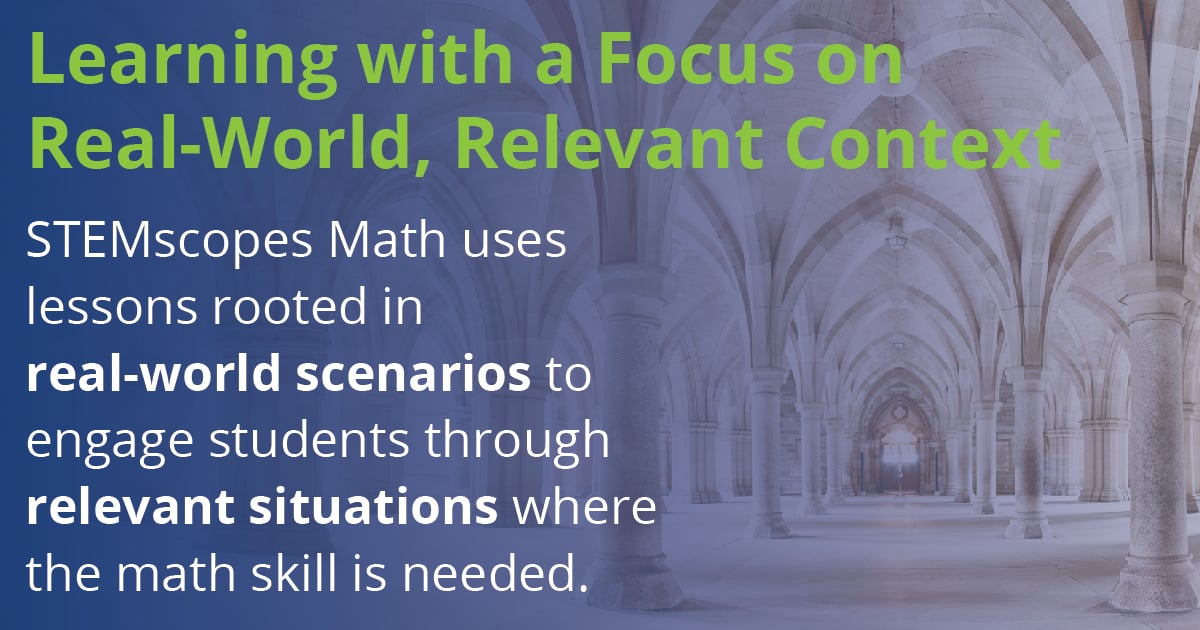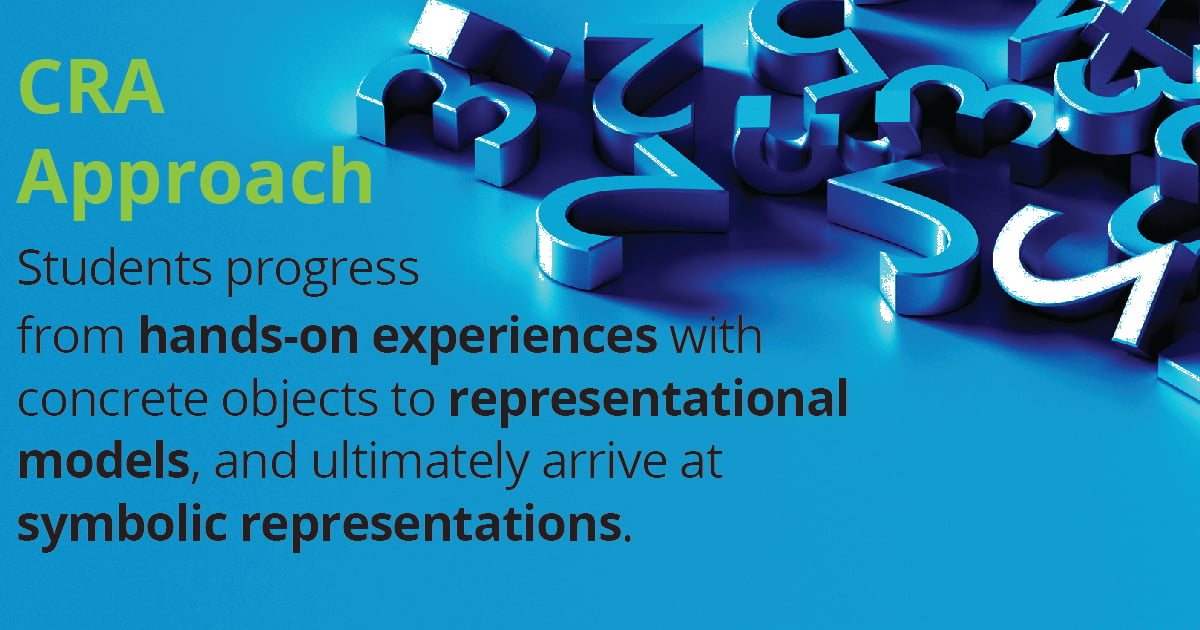
5 Easy Math Engagement Strategies for the Classroom
The news headlines are daunting. Math scores are down. School districts are scrambling to turn things around. And...
Richard Kingham | Published June 29, 2020
When the STEMscopes math team came together to design our curriculum, we set out to solve a problem that has always haunted math teachers: knowledge transfer. Every teacher has seen students ace a worksheet and then freeze when they see a non-routine problem or a routine problem in a new context. The sad truth is that many students enter adulthood incapable of applying their math skills in daily life. It’s these students we hoped to reach with our curriculum elements.
For many students, the thought of adding one more apple to a fruit basket with three apples makes more sense than 1+3=4. Curriculum elements like The Hook and Problem-Based Tasks contextualize math concepts and processes in familiar settings. During The Hook (a warm-up and lesson refresher), first graders may develop their number sense by counting, adding, and subtracting real watermelon seeds or goldfish crackers. With the Problem-Based Tasks, students work on open-ended problems together, allowing them to collaborate and explore math processes instead of merely following formulas.

Many students never develop a strong conceptual understanding of mathematics, preventing them from connecting math to everyday life. With components such as Explore and Decide and Defend, STEMscopes Math ensures that they do. Explore consists of several activities where students cultivate their knowledge and test their understanding in a variety of real-world scenarios. During Decide and Defend, students articulate their mathematical thinking in writing. Exercises like these encourage students to think beyond static facts and formulas. As Diana Saylak, EdD—a math teacher, coach, consultant, and K-6 math coordinator—said, “This curriculum… was developed to (help students) build a conceptual understanding of mathematics. With this deep understanding, students use what they know about math to solve any problem that is put in front of them, whether it is on a test or in their everyday life.”

Many students struggle with math because it seems so abstract to them. Concrete Representative Abstract (CRA) is a three-step method that eases students into some of the more abstract concepts of math. During the concrete stage, students familiarize themselves with abstract concepts by using tangible objects called manipulatives. For example, third graders may use orange slices to learn fractions by drawing a line and placing two orange slices above the line and three below. The representative phase may involve drawing the fruit pieces above the line and three below. By the time students move into the abstract stage, they have the ability and confidence to simply write the fraction and understand what it means.

Read on for Part 2.

The news headlines are daunting. Math scores are down. School districts are scrambling to turn things around. And...

Math assessment in California is changing. What used to be a compliance exercise or reporting tool is now becoming a...

You know the moment: a student’s eyes light up when the science experiment fizzes or the math puzzle helps them...